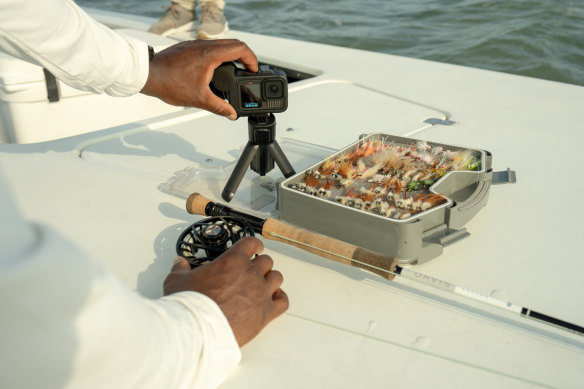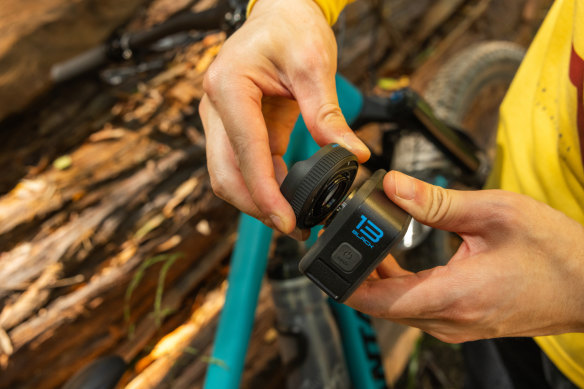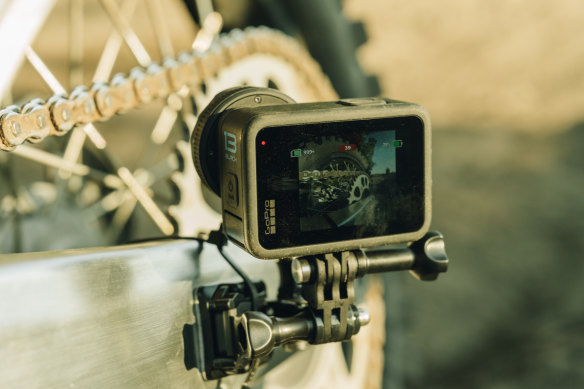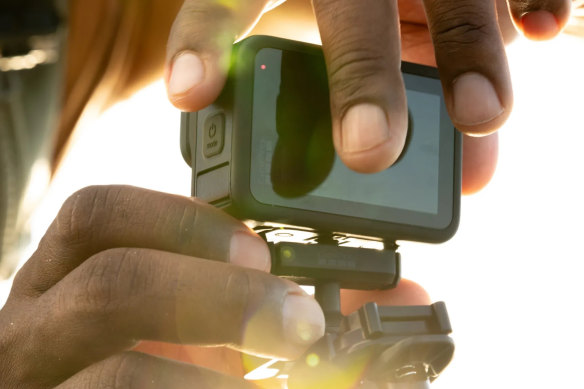GoPro is now a camera for movies and social, not just action
By Tim Biggs
In the world of action cameras, GoPro is arguably the most established brand, with a lineage of around 20 years. But with China’s DJI and Insta360 consistently introducing new tech into tiny cameras, you might think the Californian innovator of the segment would be making big moves with its latest models; maybe a big 8K sensor or a 360-degree lens, or a totally different form factor.
Instead, with the GoPro Hero 13 Black, it’s made a series of more subtle changes that I’d argue keeps the line at the very top of the pile for action cameras, while also creating a very appealing device for movie-makers and social content producers.

The GoPro is mostly associated with extreme sports, but it’s gradually becoming a platform for capturing anything.
The new GoPro looks almost exactly like the last one, and it’s got the same sensor inside. That means the same huge image that you can crop in-camera to practically any shape and resolution you want, going wide for POV shots or linear to cut back on the circular warping (or “fish-eye effect”) around the edges. Widescreen 4K or 5.3K recordings are wonderfully sharp, as are 27MP stills, and it’s easy to set things up however you want. Stabilisation is still world-class, Time Warp still creates super-smooth time lapses, a horizon lock still keeps video straight even if the camera rotates all the way around during shooting.
But that’s all the same as last year. As far as standard shooting goes, the only thing that’s new is the option to shoot in HLG HDR, which does make a difference in the details if you know the video will be viewed on a supported screen. And GPS is back after an unexplained absence last year, meaning you can stick widgets on your video that show your speed or position on a map in real time. But there are three important ancillary changes that make this the best GoPro ever.

Attachable lenses, at around $150 each, could be the start of a more flexible era for GoPro.
An ecosystem of lenses
Switchable lenses are obviously nothing new in the world of professional cameras, but they’re a big deal for GoPro. This is a tiny and hardy camera that’s built to set and forget, so any accessories need to be strong, waterproof, easy to use and seamless, which is exactly what the new HB-Series of lenses are. Not only do they twist on and off the camera with ease, but they’re coded, so the GoPro will detect them and automatically dial in the settings to make best use of them.
The Ultra Wide Lens Mod does exactly what it sounds like, extending the video much taller and wider even than the biggest 8:7 ratio setting on the standard lens; it’s a 177-degree field of view, meaning it captures practically everything that’s not behind you. You can get wide or tall 4K video at 60 frames per second, or 1080p at 120, and it still supports stabilisation and horizon lock. Or, if you prefer, you can capture everything in a big square video and cut it up later in editing.

The macro mod means you can mount the camera right up against something you want to film.
There’s also a Macro Lens Mod with a minimum focus distance of 11 centimetres, which you’ll know is a huge deal if you’ve ever tried to use a GoPro to film anything less than half a metre away. It has a rotating focus ring and focus peaking on the display, meaning the GoPro could become a camera for close-up time-lapses, vlogs or close-up creative process POVs.
For cinematic content there’s also a series of ND filters to manage your light and shutter speed (again, this is handled automatically when you attach one, unless you choose to override it), and coming soon is an Anamorphic Lens mod for cinematic widescreen with no circular distortion.
To be clear, the GoPro is already a $600 camera and these lenses come at an extra cost, so this is not a straight additional functionality. But it does make the camera significantly more versatile.
Magnetic mounting
A core part of the GoPro experience is sticking it to stuff, and that’s always been a little bit fiddly. You can either screw in a professional-style tripod or use the fold-down metal arms to fix it to a mount. But the Hero 13 Black introduces an additional option that’s much easier and (as far as I could tell) just as secure.
Magnets guide the camera onto the new system, where it’s secured by two latches, and you just squeeze them to remove. The idea is that you can install the new system onto any existing GoPro mount, and then move the camera between them. For example, I’ve been using a GoPro mounted on my e-scooter, which without the latch is a hassle because anytime I lock it up somewhere I need to unscrew the mount and take it apart to remove the camera and take it with me. Now the camera just lifts off and the mount stays behind.
I tried my best to rip the GoPro off the latch but it wouldn’t budge. Still, for those who don’t trust the new system (for example, if you’re mounting the camera under a car where you won’t be able to see it), the metal arms are still there.
Super slow-mo
GoPro’s standard 8x slow motion, which is shot at 2.7k, is totally fine and still supported on this new camera. But a new burst slow-mo option opens up so many more possibilities.
For the slowest results, you can tune the resolution down to 720p and shoot 400 frames per second. That means your 15-second shot will turn into more than three minutes of smooth slow-mo, or around a 13x reduction in speed. On the other hand, you can shoot with the full 5.3k resolution, but it will only slow down by 4x and you can only shoot for five seconds (for a 20-second slow-mo clip).
After you’ve shot a clip in slow-mo, the camera takes a few seconds to process, so it is something you’d need to plan out.

Magnetic latches make moving a GoPro between mounts, or keeping it from being stolen, much easier.
What still needs fixing
GoPro claims the new Hero 13 Black has improved battery life and heat dissipation, even with little airflow, as well as faster Wi-Fi, but these are still the camera’s weakest points.
The camera will last two and a half hours on a charge, assuming you’re shooting in 1080p and in ideal conditions. In 4K it’s tough to make it to an hour and a half, and if the sun is on the camera it may shut down long before then.
GoPro’s Quik app and paid cloud storage subscription are appealing on paper, but I still find it far from a turnkey solution. Ideally, you’ll plug the camera in to charge and it will upload all new footage, optionally erasing it from the camera when it’s done so you can go again. In practice my uploads took hours, and on more than one occasion the camera got way too hot while charging and uploading and shut itself off.
For now, removing the SD card to handle transfers and uploads manually remains the most effective.
Get news and reviews on technology, gadgets and gaming in our Technology newsletter every Friday. Sign up here.